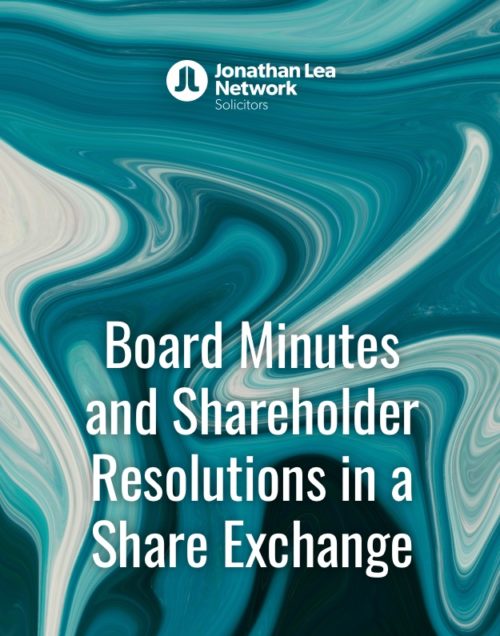VC Round Term Sheet Template
£6.99
The template assumes there is a single founder and investor, but it can be easily adapted to include multiple investors and/or founders. If there are additional parties then you will need to amend references to “Founder” and “Investor” throughout the document.
The “Key Decisions” list is not exhaustive, and you may wish to add further to the list depending on specific circumstances. There may also be other additions that are not included within this template that you may want to include. Likewise, you may also want to remove parts of the list contained on the template.
Words highlighted in yellow and/or in square brackets indicate areas which you will need to amend or add information. Once you have inserted all of the information highlighted or in square brackets, we recommend searching the document for ‘[‘ to make sure all square brackets (and the capitalised words within them) have been completed and removed.
Guide to the Jonathan Lea Network Venture Capital Investment Term Sheet
This guide aims to set out how to correctly fill-out the term sheet template to be used in relation to a venture capital investment.
This mechanism is intended as a template only and must be adapted to the particular circumstances of your case.
Your input is required at the parts of the agreement highlighted in yellow and the wording inside the square brackets which we have included explains clearly the information that should be inserted. You are advised to fill in the wording in square brackets in lower case unless directed otherwise. Any figures should be entered in numerical form. The brackets should be removed after the amendments are made.
Please note that this term sheet is based on there being one party investing into the company. This template mechanism may require amending where there is more than one party investing into the company.
Further detail
Option Pool
The option pool is usually a percentage of the equity of the company that is reserved for key employees as a way of both attracting key employees and incentivising those employees, where the company is growing, who will be able to benefit from the company’s success.
Warranties
Warranties are contractual statements of fact that the company in this case (and in some instances the founder as well) is standing behind as true and accurate as at exchange and/or completion. If a warranty is incorrect or misleading then the company and/or founder can either 1) remove the warranty from the acquisition document or 2) make a full and proper disclosure against the corresponding warranty as to why it is untrue or misleading.
‘Disclosed’ will usually by defined in the acquisition document. This definition is important as it sets the standard that a disclosure must meet in order to qualify the corresponding warranty. In order for a disclosure to be deemed to be ‘Disclosed’ (and therefore qualify the warranty that it relates to), it must contain sufficient detail to enable the buyer to identify the nature and scope of the matter disclosed. Disclosure usually occurs through the individuals giving the warranties disclosing against those warranties in the form of a disclosure letter.
Pre-emption Rights
This gives existing shareholders the right to have first refusal on the issue of new shares by the company or the transfer of existing shares from a shareholder (i.e. the shares must be offered to holders of the relevant shares in proportion to their existing holdings).
Drag along
Drag along rights allow the majority of shareholders (usually those who hold more than 75% of the company’s shares in aggregate) to accept an offer to buy their shares and force the remaining shareholders to accept such an offer.
Tag along
Tag along rights allows minority shareholders to participate in the sale at the same time as the majority shareholders (in aggregate) and for the same price for the shares, acting as a protection from minority shareholders from being left behind.
Leaver provisions
This describes the circumstances where a person is no longer an employee of the company. Good leaver usually relates to death or disability while bad leaver usually means leaving in circumstances where the employee has been dismissed.
Depending on what sort of leaver the employee falls under there will usually be significantly different treatments in respect of any shares that they own (for example, if you are a bad leaver you may need to sell your shares back to the company for nominal value).
Where your input is required on the template
All areas that require your input have been highlighted in yellow within the template. By way of summary, you will need to insert or amend the following information:
Page 1
– the name of the company being invested into;
– the specific document that you will be entering into with the investor;
– the name of the company being invested into;
– the founder’s name;
– the name of the investor;
– the amount being invested in the company;
– the class of the new shares and the nominal value of the new shares;
– the percentage of shares in the company that can be acquired through the option pool; and
– the most recent valuation of the company and the most recent price per share.
Page 2
– the estimated investment closing date;
– the agreed use of the investment;
– the aggregate amount where the founder’s liability for any breach of warranties is capped;
– the maximum number of directors on the board;
– the name of the investor and the number of director’s the investor can appoint; and
– the capped amount of capital expenditure for an individual item, expenditure above this amount for an individual item needs prior approval from the investor.
Page 3
– the threshold for settling recovery debts without the investor’s prior approval;
– the information that the investor will have access to i.e. annual accounts, quarterly financial information, cap table request and details of any offers submitted;
– the percentage of those who hold shares who, if needed, can force all other shareholders and option holders to sell their shares in the company;
– the percentage of those holding shares in the company selling their shares who may have to ensure minority shareholders are also included in any share sale; and
– the capped amount of costs that the company will pay for any of the investor’s legal fees and expenses.
Page 4
– the timescale after the acceptance of the term sheet whereby the company and founder will not pursue any other investment opportunities;
– the name of the investor;
– the timescale that the parties will attempt to enter into a binding agreement by.
– the name of the director signing on behalf of the company and the company name;
– the name of the director signing on behalf of the investor and the investor name; and
– the name of the founder.









